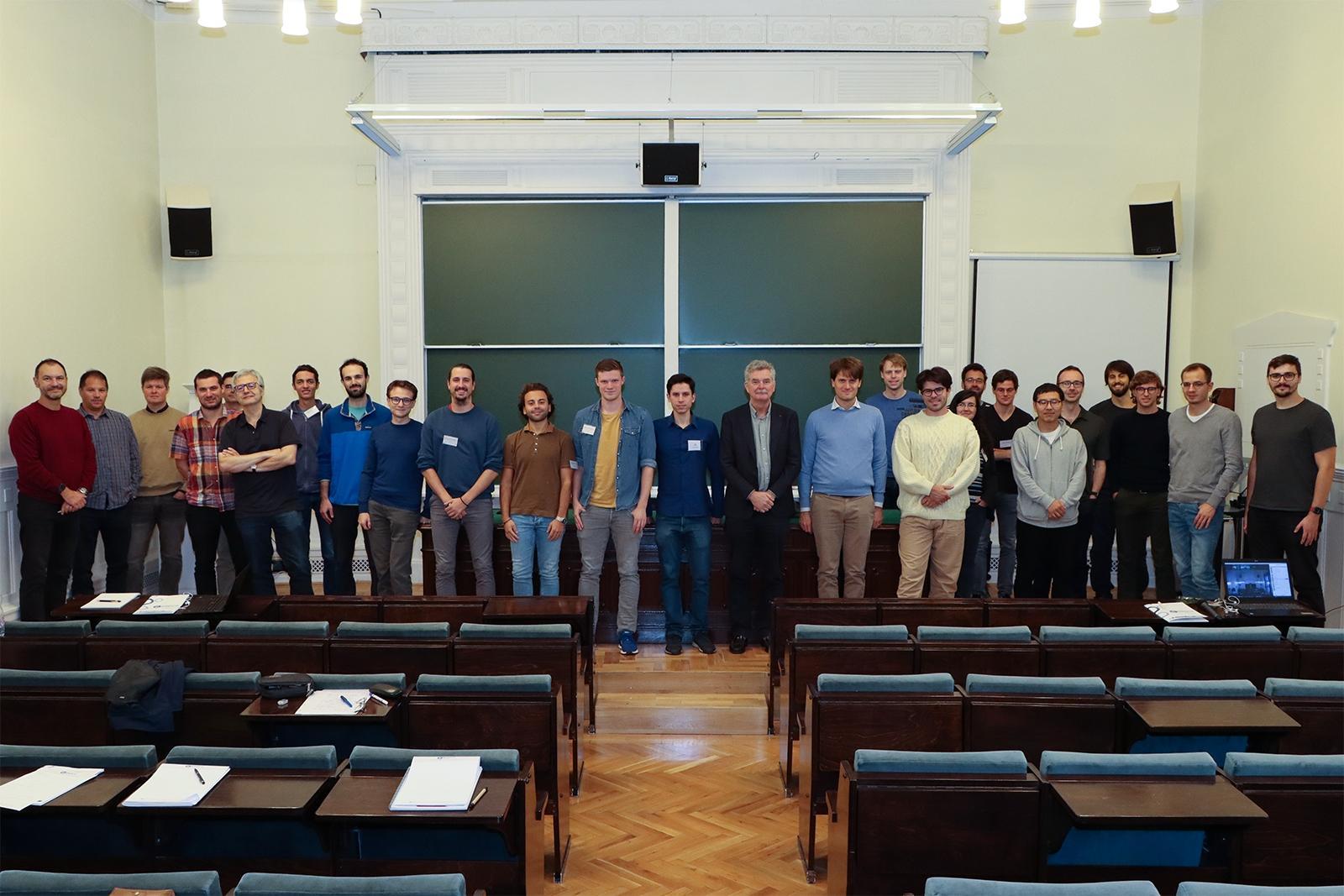During my visit to the Hungary National museum, I learned that during the cold war Budapest was seen as a city where scholars came together, minds were sparked and conventions where challenged. Well, for at least two weeks in September history seemed to have repeated itself as PhD students, postdocs and professors came together for the Renyi institute's Summer School on Quantum Optimal Transport.
As it is mandatory to include a small history lesson when talking about optimal transport, I will do the same. Gaspar Monge came up with a hard transport problem, which Kantorovich simplified, and Benamou & Brenier made dynamic. Good. Now this brings us to our goal, which is to quantize, quantisize, quantimize, whatever the word is… devise a quantum version of this theory.
This topic is extremely recent, with most papers discussed in the school dating only from 2020/2021 and written by none-other than the speakers themselves. Earlier this year I had already visited Budapest for the Sziget festival with artists like Justin Bieber, Tame Impala and Arctic Monkeys. But this schools lineup of speakers with Francois Golse, Daniel Trevisan, Alessio Figalli and Eric Carlen almost had me equally hyped up.
It was extremely interesting to hear about their views on how to devise a quantum theory of optimal transport and how their theories compared and contrasted. Some dived into quantum dynamics while others focused more on the applicability on qubits and quantum computers, but all of them influenced and inspired by the beautiful classical theory, as explained to us by Alessio. Having all of these heavyweights present during the entirety of the school also led to dynamical discussion on the validity of the theory and its possibilities. As students we were encouraged to think for ourselves, try to work out exercises, and most importantly, to ask questions. Together with the sublime organization and location (thank you organizers and Renyi institute!) this made for a very successful school, which also laid a perfect foundation for the workshop on the same topic the week after.

When we were done discussing mathematics (which if my supervisors read this, was only for a very limited time), there were plenty of things to in the city, and social events planned by the organization. The guided tour took us to some hard to discover spots in the city and the plenty of restaurants and bars made for great dinners. As far as culture is concerned, the Hungarian language is known to be one of the hardest languages to learn. Nevertheless, we extended our vocabulary with words like “palinka”, meaning chalk, and “szimpla kert” which we learned means lecture hall. So the phrase “igyunk egy kis pálinkát a szimpla kert" roughly translates to “let’s get some chalk from the lecture hall”.
All in all I loved my time in Budapest and I am quite certain that my peers did too!
Kind regards and “Hamarosan találkozunk!”
- Robert de Keijzer, Eindhoven University of Technology
